Avoid These 15 Things When Your Cat Is Skittish
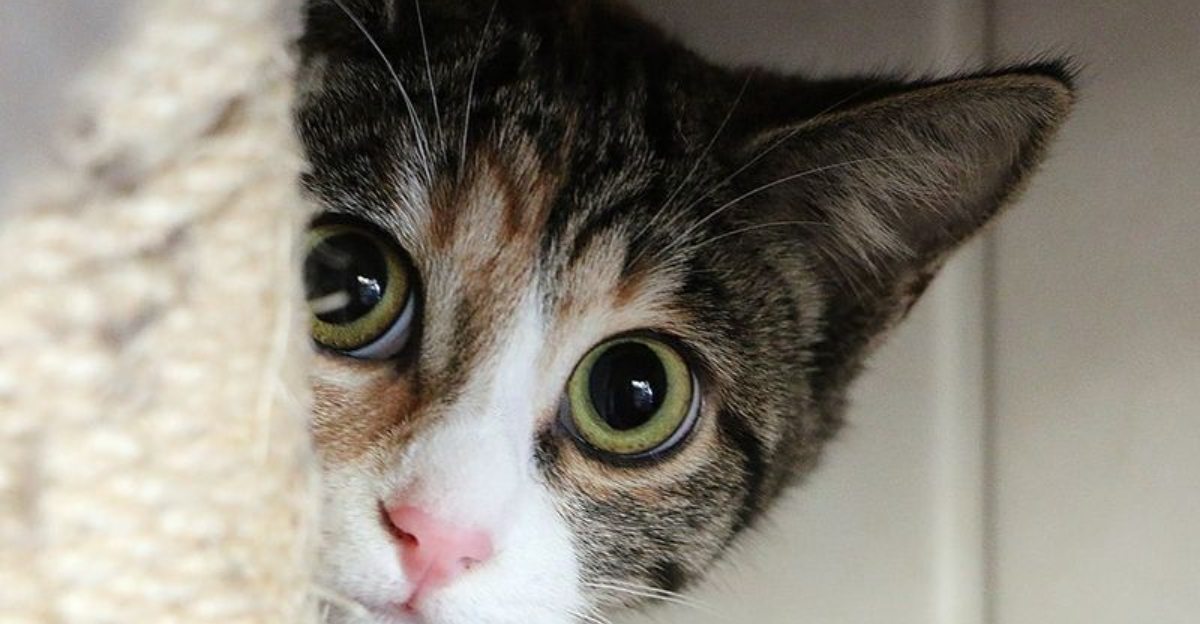
Nervous cats need special handling to feel safe in their environment. When your feline friend shows signs of fear or anxiety, your approach can make all the difference between building trust or creating more stress.
Understanding what triggers your skittish cat will help you create a nurturing space where they can gradually overcome their fears.
1. Loud Music And Sudden Noises
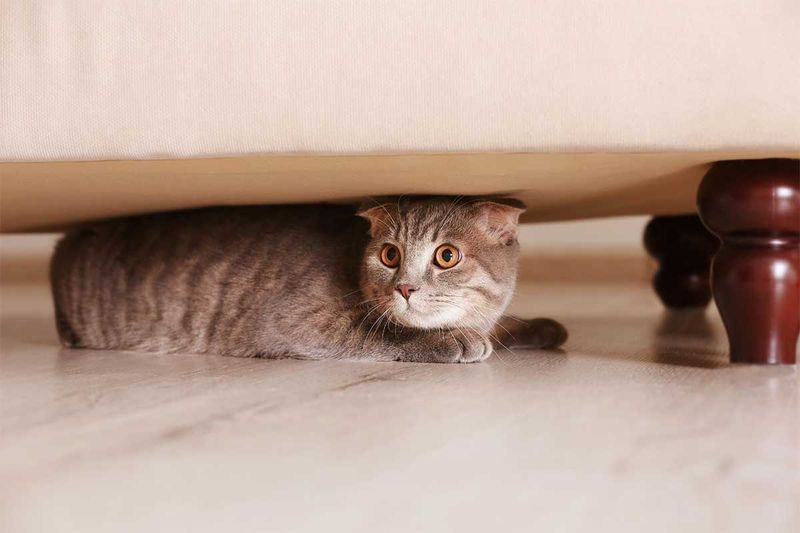
Cats have incredibly sensitive hearing that makes them jump at the slightest sound. Sudden noises like vacuum cleaners, blenders, or thunderstorms can send your skittish friend into hiding for hours.
Keep your home relatively quiet and create sound-dampened safe spaces. Consider playing soft background music to mask startling noises from outside.
2. Direct Eye Contact
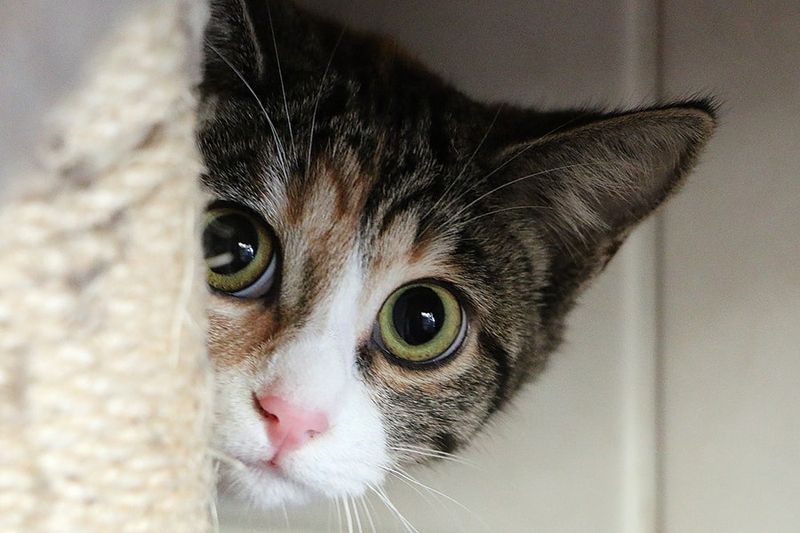
Staring contests might seem innocent to us, but for cats, prolonged eye contact reads as a direct threat. Your nervous kitty interprets your loving gaze as predatory behavior, triggering their fight-or-flight response.
Try the slow blink technique instead – cat experts call this a ‘kitty kiss.’ It signals friendship and helps build trust with your anxious companion.
3. Forced Petting Sessions
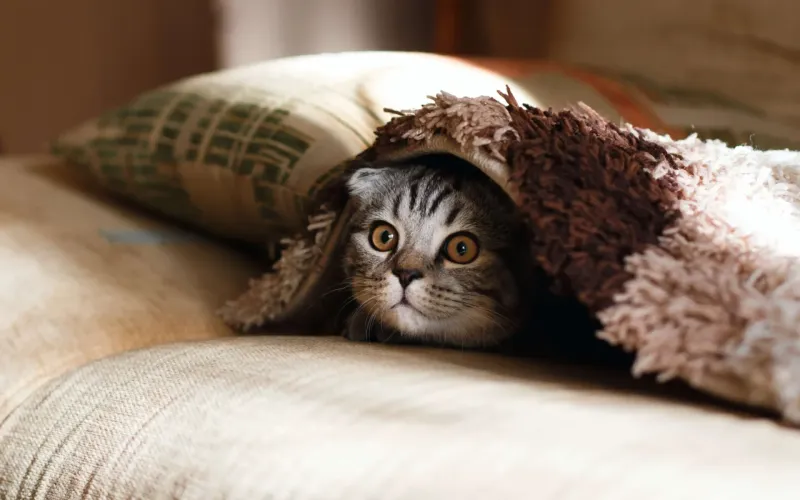
Grabbing your cat for cuddles when they’re not in the mood creates negative associations. Even well-meaning affection can feel threatening to a cat already on edge about their surroundings.
Let your cat initiate contact on their terms. Patience pays off – offer your hand gently and wait for them to approach. This builds trust gradually rather than reinforcing fear.
4. Crowded Gatherings
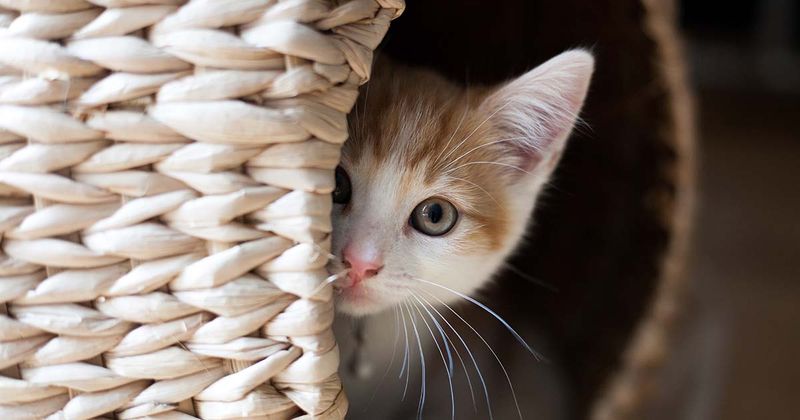
Party crowds overwhelm sensitive cats with unfamiliar scents, movements, and unpredictable noises. Multiple strangers in their territory can trigger extreme anxiety in your already nervous pet.
Create a quiet sanctuary room during gatherings. Stock it with familiar items, food, water, and litter, allowing your cat to retreat when feeling overwhelmed. This respects their need for security.
5. Chaotic Household Routines
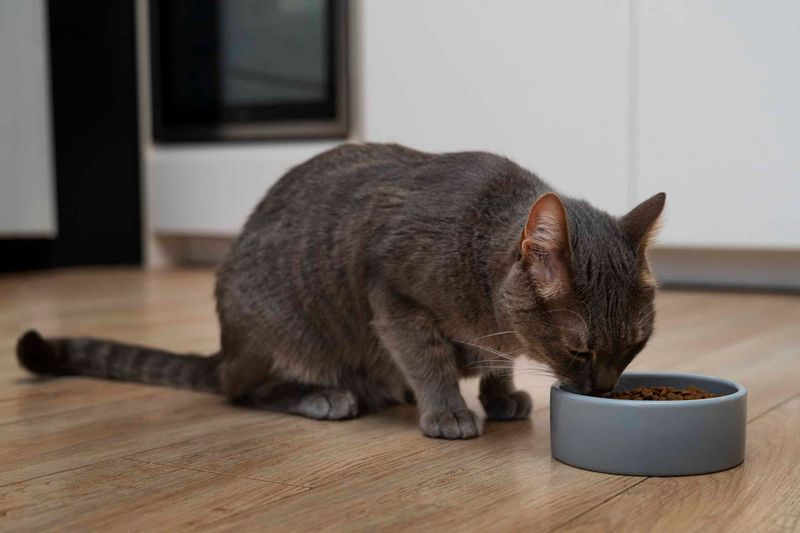
Unpredictable schedules send your cat’s stress levels soaring. Nervous cats rely heavily on consistent routines to feel secure in their environment.
Maintain regular feeding times, play sessions, and sleep schedules even on weekends. Your predictable behavior becomes an anchor for your anxious pet, helping them feel safer through the consistency you provide.
6. Quick Movements Around Them
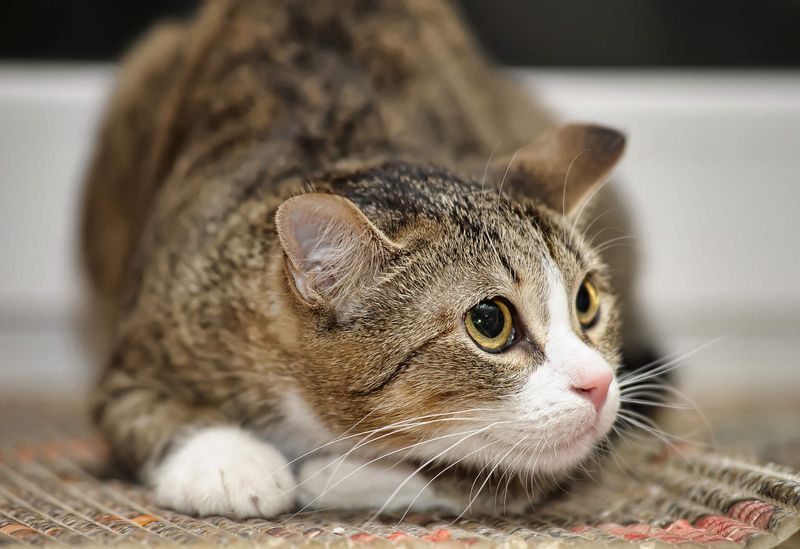
Sudden dashes across the room trigger your cat’s prey instincts in reverse – they feel hunted rather than hunter. Fast-moving hands or feet appear threatening to a cat already on high alert.
Move slowly and deliberately when your skittish cat is present. Telegraph your movements and speak softly before approaching. This gentle approach helps prevent startling your sensitive companion.
7. Strong Scents And Chemicals
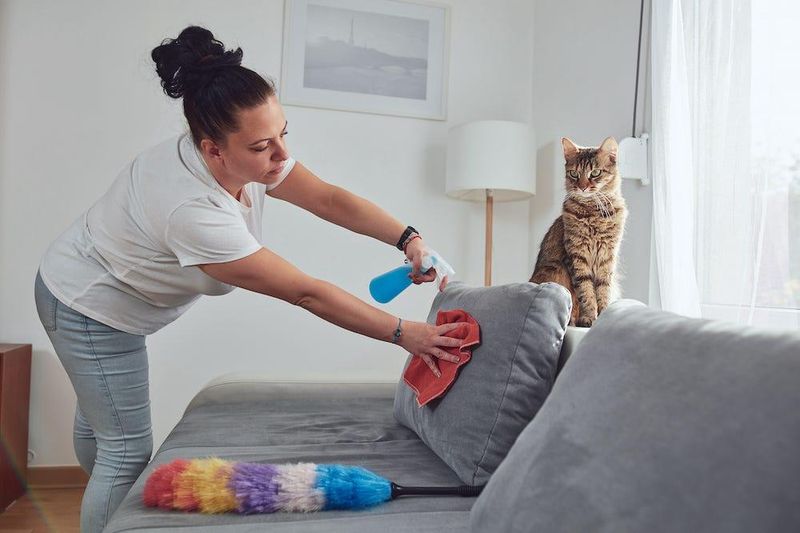
Cats possess 14 times our scent sensitivity, making strong odors overwhelming. Cleaning products, perfumes, and essential oils can irritate their delicate systems and send them running for cover. Choose unscented or natural cleaning products when possible. Allow rooms to air out after cleaning before letting your cat re-enter, and never use essential oils around cats – many are toxic to them.
8. Forced Carrier Experiences
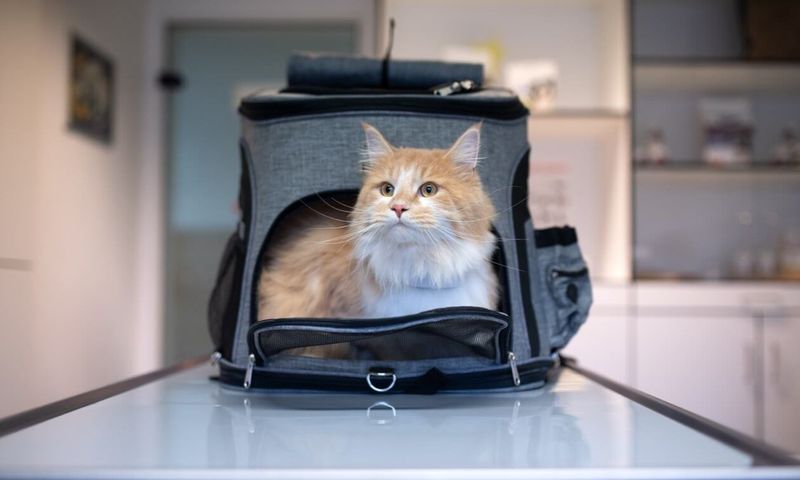
Shoving your cat into a carrier creates trauma that lasts long after the vet visit ends. The struggle reinforces fear and makes future trips increasingly difficult.
Leave the carrier out as regular furniture so it becomes familiar territory. Place treats inside randomly and feed meals near or in it occasionally. This positive association transforms the carrier from prison to cozy cave.
9. Punishment For Fearful Behavior

Scolding your cat for hiding, hissing, or running away only confirms their suspicion that the world is scary. These reactions are symptoms of anxiety, not misbehavior requiring correction.
Respond with patience instead of frustration. Provide positive reinforcement when they show brave behaviors. This supportive approach builds confidence gradually while preserving your bond of trust.
10. Rearranging Furniture Frequently
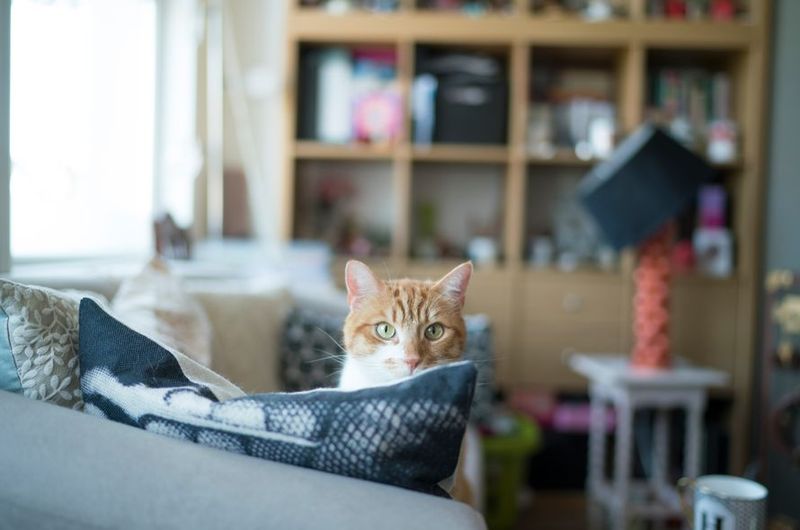
Cats map their territory precisely, using furniture as landmarks for security. Moving things around disrupts their mental map and can trigger anxiety in cats already struggling with confidence.
Make changes gradually when needed. Maintain some consistent safe zones that rarely change. Your skittish friend relies on environmental stability to feel secure in their home territory.
11. Introducing New Pets Abruptly
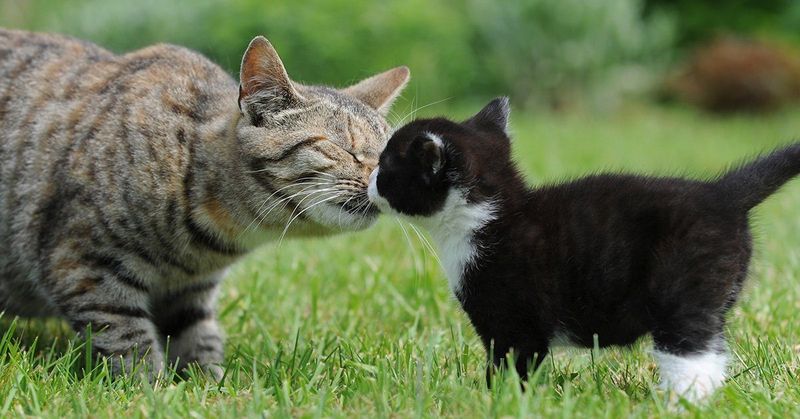
Bringing home a new animal without proper introduction protocols can traumatize your already-nervous cat. Territory disputes create lasting tension that’s difficult to resolve.
Separate new pets initially and exchange scents through blanket swapping before visual introductions. Follow a gradual introduction process over weeks, not days. This methodical approach respects your skittish cat’s need for slow adjustment.
12. Blocking Escape Routes
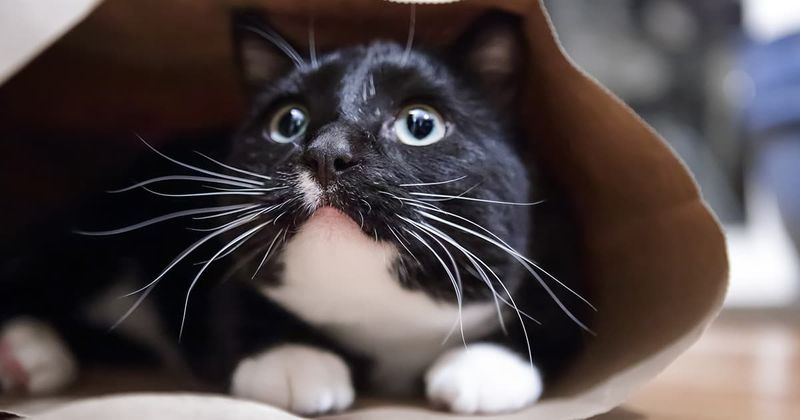
Cornering a frightened cat removes their sense of control and triggers panic. Without escape options, even gentle handling feels threatening to a skittish cat.
Always ensure multiple exit paths during interactions. Position yourself to leave space for retreat, especially during necessary handling like medication. This respect for their boundaries builds trust over time.
13. Ignoring Body Language Signals
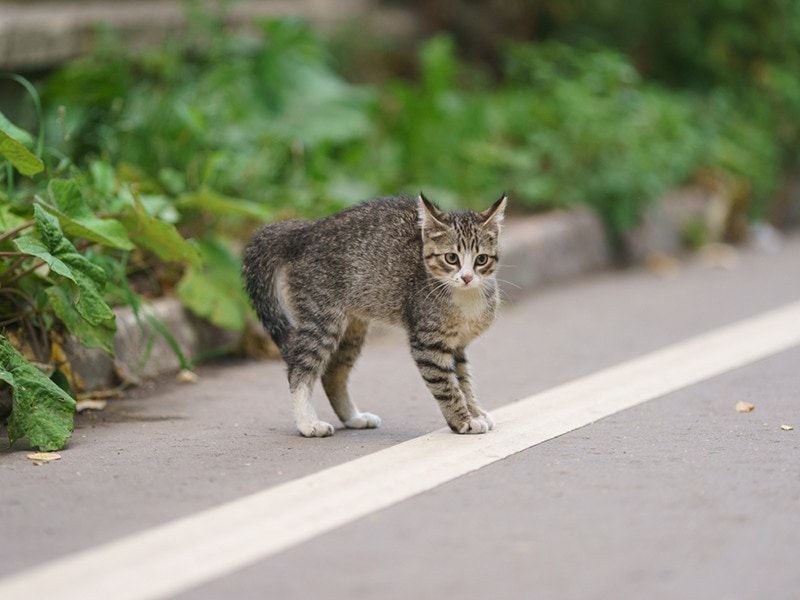
Cats communicate discomfort through subtle cues before resorting to hissing or scratching. Flattened ears, dilated pupils, and twitching tails are all warning signs of increasing stress.
Learn to recognize these early signals and respond appropriately by backing off. Respecting their communication prevents escalation and shows your cat you understand their needs, strengthening your relationship.
14. Changing Their Food Suddenly

Dietary changes can upset sensitive cats both physically and emotionally. The stress of unfamiliar textures and flavors compounds existing anxiety about their environment.
Introduce new foods gradually by mixing increasing amounts with their regular food. Take at least 7-10 days for transitions. This slow approach prevents digestive upset while respecting their need for consistency.
15. Skipping Playtime And Enrichment
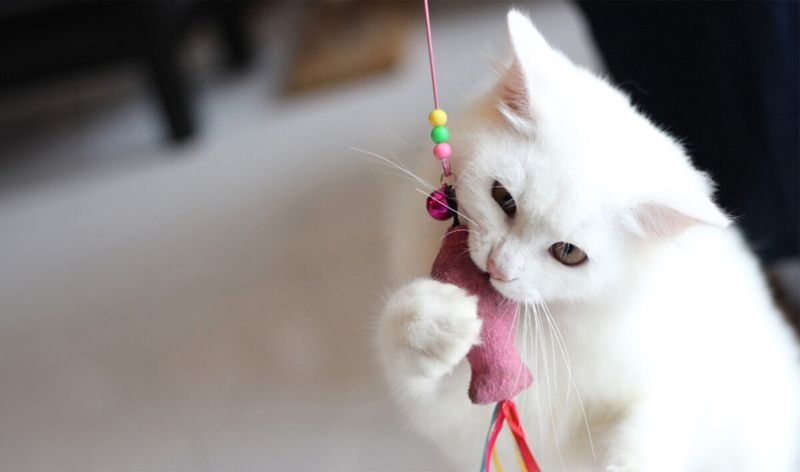
Even nervous cats need mental and physical stimulation. Without appropriate outlets, anxiety often increases as pent-up energy has nowhere to go.
Find toys that match your cat’s comfort level – some prefer solo play while others engage better with interactive wand toys. Regular play sessions help build confidence while strengthening your bond through positive experiences.






